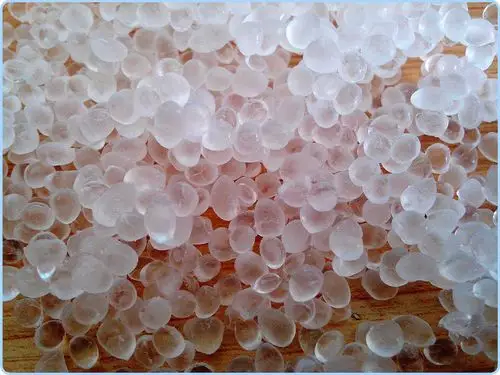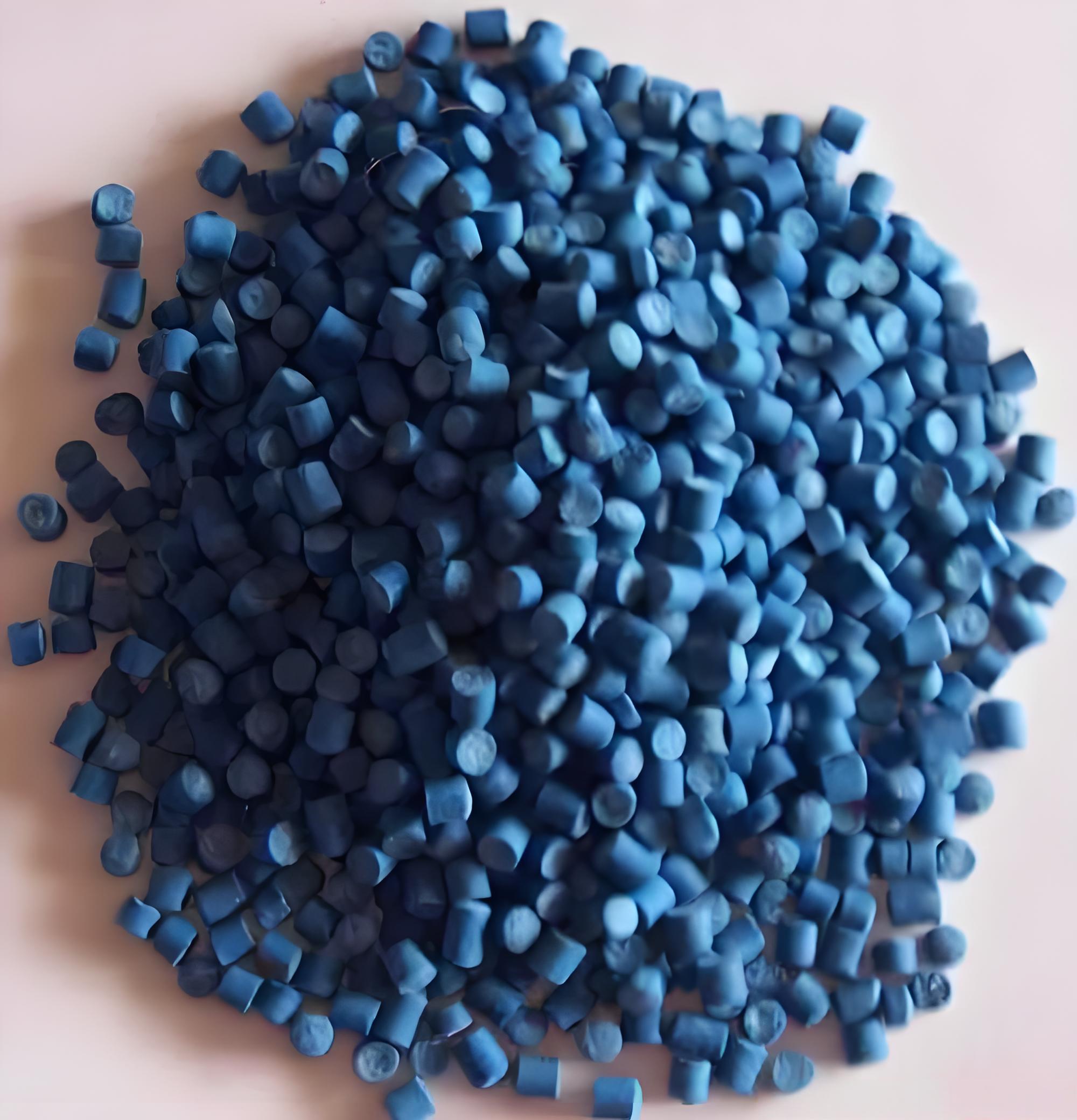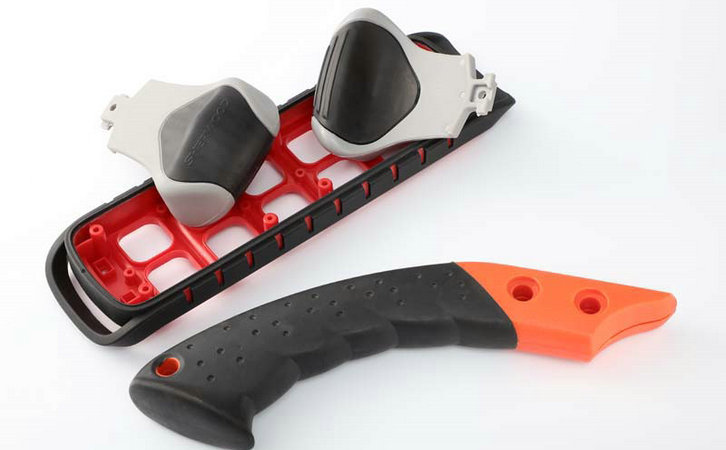Having spent over a decade in the plastics manufacturing industry, I’ve worked hands-on with injection molding processes for a wide range of materials, from automotive components to consumer goods. Two materials that often come up in discussions are thermoplastic elastomer (TPE) and polyethylene (PE), each with its own strengths and quirks when used in injection molding. If you’re wondering which material is better suited for your project—whether it’s for flexible grips, rigid packaging, or something else entirely—I’m here to share my insights. This article will break down the advantages and disadvantages of TPE and PE in injection molding, drawing from my experience to help you make an informed decision. Let’s dive into the details of these materials and how they perform in the molding process.

Why Compare TPE and PE in Injection Molding?
When someone searches for the pros and cons of TPE versus PE in injection molding, they’re likely trying to choose the right material for a specific product or troubleshoot issues in their manufacturing process. Both materials are popular in industries like packaging, automotive, and medical devices, but their properties and processing requirements differ significantly. My goal is to clarify these differences, focusing on how they impact product performance, cost, and production efficiency.
Early in my career, I worked on a project where we debated between TPE and PE for a flexible medical container. The choice came down to balancing flexibility, cost, and moldability, and it taught me how critical it is to understand each material’s behavior in injection molding. Let’s explore what makes TPE and PE unique in this context.
Understanding TPE and PE
Before we compare their advantages and disadvantages, let’s define the materials:
Thermoplastic Elastomer (TPE): TPEs are a family of materials that combine the elasticity of rubber with the processability of thermoplastics. They’re often based on styrene-ethylene-butylene-styrene (SEBS) or other copolymers, offering flexibility, softness, and recyclability. TPE is ideal for products like soft-touch grips, seals, or overmolded components.
Polyethylene (PE): PE is a versatile thermoplastic available in various densities forms, such as low-density polyethylene (LDPE), high-density polyethylene (HDPE), and linear low-density polyethylene (LLDPE). It’s known for its rigidity (in HDPE form), chemical resistance, and low cost, making it a staple for containers, bottles, and pipes.
Both materials are widely used in injection molding, but their properties lead to different outcomes in terms of product performance and manufacturing challenges.
Key Differences in Injection Molding
To give you a clear overview, I’ve compiled a table summarizing the advantages and disadvantages of TPE and PE in injection molding, based on my experience and industry knowledge.
|
Aspect |
TPE Advantages |
TPE Disadvantages |
PE Advantages/Disadvantages |
|---|---|---|---|
|
Material Properties |
Soft, flexible, rubber-like feel; excellent for overmolding |
Higher cost; sensitive to processing conditions |
Rigid (HDPE) or flexible (LDPE); low cost but less elastic |
|
Processing |
Easy to mold, good flow; supports complex designs |
Requires precise temperature control; longer cycle times |
Fast cycle times; less sensitive to temperature but prone to warping |
|
Applications |
Ideal for soft-touch, flexible parts; biocompatible grades available |
Limited chemical resistance; not suited for rigid parts |
Excellent for rigid containers; poor for flexible, elastic parts |
|
Cost |
Recyclable, but higher raw material cost |
More expensive than PE; complex formulations |
Very cost-effective; widely available but less premium feel |
1. Material Properties
TPE: Advantages
TPE’s standout feature is its rubber-like elasticity, which makes it perfect for parts requiring flexibility, such as soft grips, seals, or overmolded components on rigid substrates. In one project, we used TPE to overmold a soft grip onto a PP handle, and the result was a comfortable, non-slip surface that users loved. TPE also offers excellent tactile properties, with a smooth, matte finish that feels premium. Additionally, certain TPE grades are biocompatible, making them suitable for medical devices like syringe plungers or flexible tubing.

TPE: Disadvantages
The main drawback of TPE is its higher cost compared to PE. The raw material is more expensive due to its complex formulation, which can drive up production costs. TPE also has limited chemical resistance, which can be an issue for products exposed to oils or solvents. I once worked on a TPE part that degraded when exposed to cleaning agents, forcing us to switch to a more resistant material for that application.
PE: Advantages
PE’s biggest strength is its versatility. HDPE provides rigidity for parts like bottles and containers, while LDPE and LLDPE offer flexibility for films or softer components. PE’s chemical resistance is excellent, making it ideal for packaging chemicals or food products. In a packaging project, we chose HDPE for its durability and low cost, producing thousands of bottles without issues. PE is also lightweight, which reduces shipping costs.
PE: Disadvantages
PE lacks the elasticity of TPE, so it’s not suitable for parts requiring a rubber-like feel. Even LDPE, while flexible, doesn’t recover its shape as well as TPE after deformation. PE also has a less premium feel, often described as waxy or slippery, which can be a drawback for consumer-facing products like handles or grips. Additionally, PE parts can yellow over time when exposed to UV light, which I’ve seen in outdoor applications.
2. Processing in Injection Molding
TPE: Advantages
TPE is easy to process in injection molding due to its good flow properties, allowing it to fill complex molds with intricate geometries. It’s particularly well-suited for overmolding, where a soft TPE layer is molded onto a rigid substrate like PP or ABS. I’ve overseen projects where TPE’s flowability enabled us to create detailed, multi-material parts with minimal defects. TPE’s recyclability also makes it appealing for sustainable manufacturing, as scrap can be remelted and reused.
TPE: Disadvantages
TPE requires precise temperature control during molding, typically between 180-220°C, to avoid degradation or poor flow. I recall a production run where improper temperature settings caused TPE parts to have uneven surfaces, wasting time and material. TPE also tends to have longer cycle times due to its slower cooling rate, which can slow down production compared to PE.
PE: Advantages
PE is a dream to process in injection molding because of its fast cycle times and low processing temperatures (typically 160-200°C). This efficiency translates to higher throughput and lower energy costs. In a high-volume packaging project, we used HDPE to produce thousands of containers per hour, thanks to its quick cooling and ejection properties. PE is also less sensitive to temperature variations, making it forgiving for less experienced operators.
PE: Disadvantages
PE can be prone to warping or shrinkage if cooling isn’t controlled properly, especially with HDPE. I’ve seen thin-walled PE parts deform because the mold wasn’t cooled uniformly. PE also struggles with complex geometries compared to TPE, as its flow properties are less forgiving for intricate designs. Additionally, PE’s low surface energy makes it challenging to bond or paint, which can limit its use in multi-material applications.

3. Applications in Injection Molding
TPE: Advantages
TPE shines in applications requiring flexibility and a soft-touch feel, such as grips, seals, or medical components. Its ability to bond well in overmolding makes it ideal for multi-material parts, like a TPE grip on a PE or PP base. In a medical device project, we used TPE for a flexible syringe plunger, which needed to be soft yet durable. TPE’s biocompatible grades also make it a go-to for healthcare products.
TPE: Disadvantages
TPE’s limited chemical resistance restricts its use in harsh environments, such as containers for aggressive chemicals. Its higher cost also makes it less competitive for high-volume, low-margin products like disposable packaging. In one case, we avoided TPE for a chemical container because it couldn’t withstand the contents, opting for PE instead.
PE: Advantages
PE is the king of rigid containers and packaging, thanks to its low cost, chemical resistance, and durability. HDPE is widely used for bottles, caps, and industrial containers, while LDPE and LLDPE are perfect for flexible films or squeezable bottles. In a food packaging project, we used LDPE for its flexibility and FDA compliance, delivering a cost-effective solution. PE’s wide availability also ensures consistent supply chains.
PE: Disadvantages
PE’s lack of elasticity makes it unsuitable for rubber-like applications. If you need a part with significant stretch or recovery, like a seal or grip, PE will disappoint. Its less premium appearance can also be a drawback for high-end consumer products. I once worked on a project where PE was rejected for a cosmetic bottle because it looked too “plastic-y” compared to TPE’s softer, more luxurious feel.
4. Cost and Sustainability
TPE: Advantages
TPE is fully recyclable, which aligns with growing demand for sustainable manufacturing. Its ability to be remelted and reused reduces waste, a feature I’ve leveraged in projects aiming for eco-friendly certifications. Some TPE formulations are even bio-based, derived from renewable sources like sugarcane, which appeals to environmentally conscious brands.
TPE: Disadvantages
The higher raw material cost of TPE can be a barrier, especially for high-volume production. I’ve seen clients hesitate to use TPE for budget products because it can cost 2-3 times more than PE per kilogram. The need for specialized formulations (e.g., medical-grade TPE) can further increase costs.
PE: Advantages
PE is extremely cost-effective, making it the go-to for mass-produced items like bottles and containers. Its widespread use and simple production process keep prices low. In a packaging project, we chose HDPE to keep costs down while meeting performance requirements, allowing the client to stay competitive in a price-sensitive market.
PE: Disadvantages
While PE is recyclable, its environmental impact is less favorable than TPE in some cases. PE is typically derived from non-renewable petroleum, and its recycling rates vary by region. Additionally, PE’s lower aesthetic appeal can limit its use in premium products, where TPE’s softer feel often wins out.

Practical Considerations for Injection Molding
Based on my experience, here are some practical factors to consider when choosing between TPE and PE for injection molding:
Product Requirements: If your product needs flexibility, elasticity, or a soft-touch feel (e.g., grips, seals), TPE is the better choice. For rigid, durable parts like containers or pipes, PE (especially HDPE) is ideal.
Production Volume: For high-volume, low-cost products, PE’s fast cycle times and low material cost make it a clear winner. TPE is better suited for lower-volume or premium products where flexibility and feel are priorities.
Environmental Conditions: If the part will face chemicals, oils, or UV exposure, PE’s chemical resistance and TPE’s UV resistance (for SEBS-based grades) should guide your choice. I once had to switch from TPE to HDPE for a chemical storage container due to TPE’s poor solvent resistance.
Aesthetics: TPE’s smooth, matte finish is more appealing for consumer-facing products, while PE’s waxy feel can be a drawback for premium applications.
In one memorable project, we were molding flexible medical tubing. Initially, we tried LDPE for cost savings, but its lack of elasticity caused issues during use. Switching to TPE solved the problem, providing the flexibility and biocompatibility needed, though at a higher cost.
Tips for Successful Injection Molding
To get the best results with TPE or PE, follow these tips from my years in the field:
Optimize Mold Design: For TPE, ensure molds have proper venting to avoid trapped air, which can cause surface defects. For PE, use uniform cooling channels to prevent warping.
Control Processing Parameters: TPE requires precise temperature control (180-220°C) to avoid burning or poor flow. PE is more forgiving but needs consistent cooling to minimize shrinkage.
Test Material Grades: Not all TPEs or PEs are the same. Test specific grades (e.g., SEBS-based TPE or HDPE vs. LDPE) to ensure compatibility with your product. I’ve seen projects fail because the wrong grade was chosen.
Consider Overmolding: If your product combines rigid and soft components, TPE’s overmolding capabilities make it a strong choice. Ensure the substrate (e.g., PP or ABS) is compatible with TPE.
Prototype Early: Always mold test parts to check for defects like flash (with TPE) or sink marks (with PE). Early prototyping saved us from costly rework in a consumer goods project.

Common Mistakes to Avoid
I’ve seen plenty of missteps in injection molding projects. Here are some to watch out for:
Choosing Based on Cost Alone: Opting for PE to save money can backfire if your product needs TPE’s elasticity. A client once used LDPE for a flexible seal, only to find it cracked under stress.
Ignoring Processing Needs: TPE’s sensitivity to temperature can lead to defects if not handled properly. I’ve seen burnt TPE parts due to overheated barrels.
Overlooking End-Use Conditions: Using TPE in a chemical-heavy environment or PE in a UV-exposed setting can lead to premature failure. Always match the material to the application.
Neglecting Surface Preparation for Overmolding: TPE overmolding requires a clean, compatible substrate. I’ve seen bonds fail because the base material wasn’t properly prepared.
Real-World Applications
Both TPE and PE are staples in injection molding across industries:
TPE: Used for soft-touch grips (e.g., tool handles), medical tubing, seals, and overmolded components. In a fitness equipment project, we used TPE for a comfortable, non-slip grip that enhanced user experience.
PE: Dominant in packaging (e.g., HDPE bottles, LDPE films), pipes, and consumer goods like buckets. A client used HDPE for durable storage containers, leveraging its low cost and chemical resistance.
The choice depends on the product’s function, aesthetics, and budget. For example, a premium acupressure mat might use TPE for its soft feel, while a disposable water bottle would rely on HDPE for cost efficiency.
My Personal Recommendation
If your project requires flexibility, a premium feel, or overmolding, I’d recommend TPE, especially SEBS-based grades, for its elasticity and recyclability. However, if you’re producing high-volume, rigid parts like containers or pipes, PE (particularly HDPE) is hard to beat for its cost-effectiveness and chemical resistance. Always test both materials in your specific application and consult with your material supplier to select the right grade.

Conclusion
Choosing between TPE and PE for injection molding is about understanding your product’s needs and balancing performance, cost, and manufacturability. TPE offers unmatched flexibility and a premium feel, making it ideal for soft, elastic parts, but it comes with higher costs and processing challenges. PE excels in rigid, cost-sensitive applications with excellent chemical resistance, though it lacks TPE’s elasticity and aesthetic appeal. My years in the industry have taught me that testing and tailoring your choice to the application is key. Whether you’re molding a flexible grip or a sturdy bottle, the right material and process can make all the difference.
Related Questions and Answers
Q: Can TPE and PE be used together in injection molding?
A: Yes, TPE can be overmolded onto PE in multi-material molding, but PE’s low surface energy requires primers or surface treatments for strong bonding. I’ve seen this work well for soft-touch grips on PE handles.
Q: Is TPE more environmentally friendly than PE?
A: TPE can be more sustainable due to bio-based options and recyclability, but PE is also recyclable, though often petroleum-based. Check with your supplier for eco-friendly grades.
Q: Why do TPE parts sometimes have surface defects?
A: Defects like flash or uneven surfaces in TPE parts often result from improper temperature control or poor mold venting. Ensure your barrel temperature is within 180-220°C and molds are well-vented.
Q: Which is better for food-grade applications?
A: Both TPE and PE have food-grade options, but PE (especially HDPE and LDPE) is more common due to its low cost and FDA compliance. TPE is used for flexible food containers but is pricier.
Q: How do I reduce cycle times for TPE molding?
A: Optimize mold cooling and lower barrel temperatures slightly (within the recommended range) to speed up TPE cooling. However, avoid rushing, as it can cause defects like incomplete filling.





